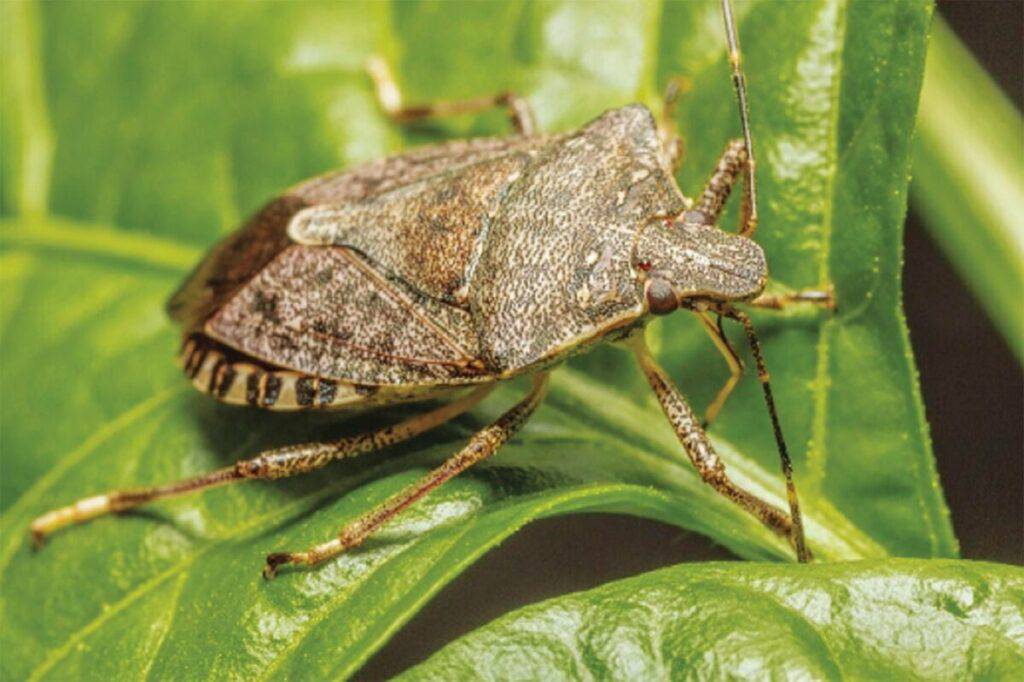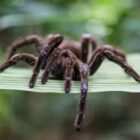Why do stink bugs stink?

Stink bugs, part of the family Pentatomidae, are notable for their distinct odor and unique defense mechanism. Their reputation as “stink bugs” derives from the pungent odor they release when threatened or disturbed.
Stink bugs belong to a family of insects comprising over 4,700 species worldwide. Though their appearance may vary, they generally share a shield-shaped body and a penchant for plants. What sets them apart, however, is their unique ability to produce an odor that can make even the hardiest of individuals wrinkle their noses.
A Nose-Wrinkling Symphony
Within the intricacies of a stink bug’s anatomy lies a specialized organ known as the stink gland. This microscopic powerhouse, situated in the insect’s thorax, plays the lead role in our olfactory drama. When the stink bug perceives a threat, whether from a curious human or a would-be predator, it initiates a chemical ballet that culminates in the release of an odiferous blend. It’s a sensory assault, a warning signal, and an evolutionary marvel all wrapped into one.
The primary architects of this symphony are aldehydes—organic compounds that, in simpler terms, make up the stink bug’s signature scent. But there’s more to the composition than meets the nose. Stink bugs also unleash a variety of stink bug-specific compounds, adding complexity to their aromatic defense.
The Evolutionary Whys
In the grand narrative of evolution, every species faces the perennial challenge of eluding predators while securing resources for survival. For the stink bug, mastering the art of chemical warfare through its malodorous defense mechanism has been a crucial chapter in its survival story.
In the unforgiving theater of nature, where the law of the jungle reigns supreme, the ability to deter potential threats became a make-or-break trait. Enter the stink gland, an evolutionary innovation that transformed the insect’s destiny.
As generations unfolded, stink bugs with a more effective and potent defense mechanism had a higher likelihood of surviving and reproducing. The malodorous deterrent became a hereditary trait, passed down through the ages like a pungent family heirloom. Those that emitted a more offensive odor found themselves less likely to become a predator’s lunch, thus ensuring the perpetuation of their genetic legacy.
The selective pressure of predation, combined with the constant arms race between stink bugs and their would-be assailants, led to the refinement of this chemical defense strategy. What may seem like an inconvenience to humans—the pungent odor—was, in fact, a masterstroke of evolutionary brilliance.
The Art of Chemical Warfare
What purpose does this malodorous symphony serve beyond evoking wrinkled noses and furrowed brows? It turns out that the stink bug’s chemical concoction may possess qualities beyond its role as a deterrent.
Intriguingly, some studies suggest that the compounds responsible for the stench may have antimicrobial properties. The stink bug is a miniature, six-legged chemist, armed with a brew that not only repels predators but also shields the stink bug from harmful pathogens in its environment.
As the stink bug deploys its noxious defense mechanism, it’s essentially creating a chemical force field, a shield against the microscopic threats that lurk in its surroundings. This dual-purpose defense strategy raises questions about the intricate interplay between adaptation and evolution. Did the stink bug stumble upon this fragrant solution by chance, or was it a calculated evolutionary leap?
The notion of chemical warfare may conjure images of battles and conflicts, but in the case of the stink bug, it’s a silent and efficient defense strategy rooted in the intricacies of biochemical evolution. The synthesis of compounds not only deters predators but potentially safeguards the bug’s delicate existence in a world teeming with microscopic adversaries.










